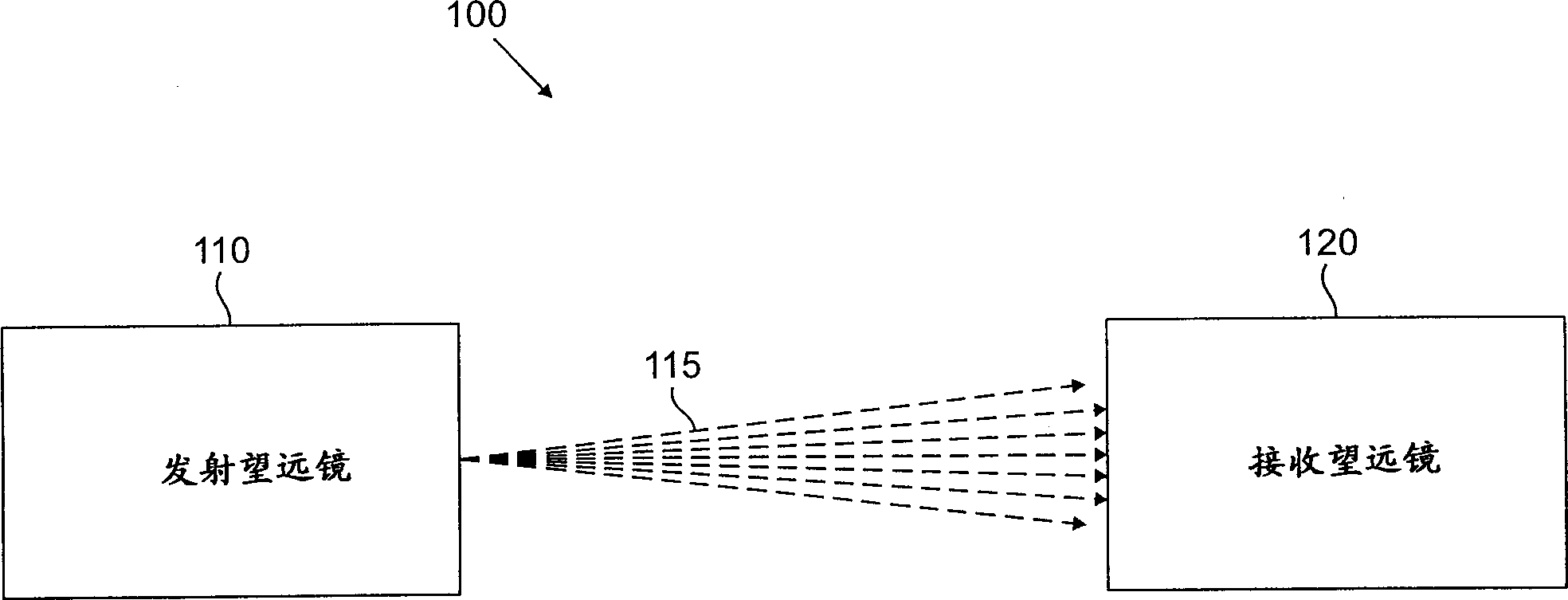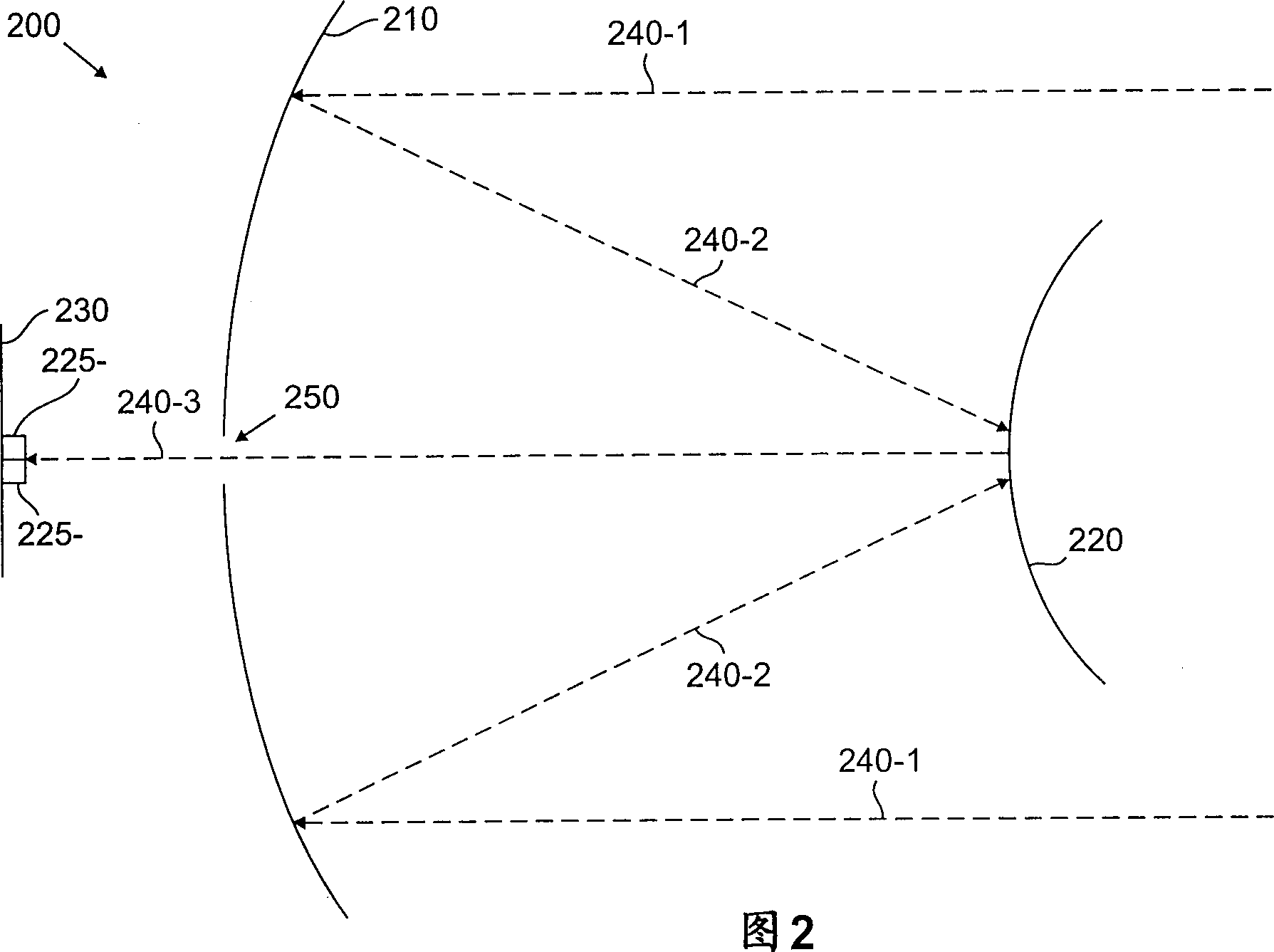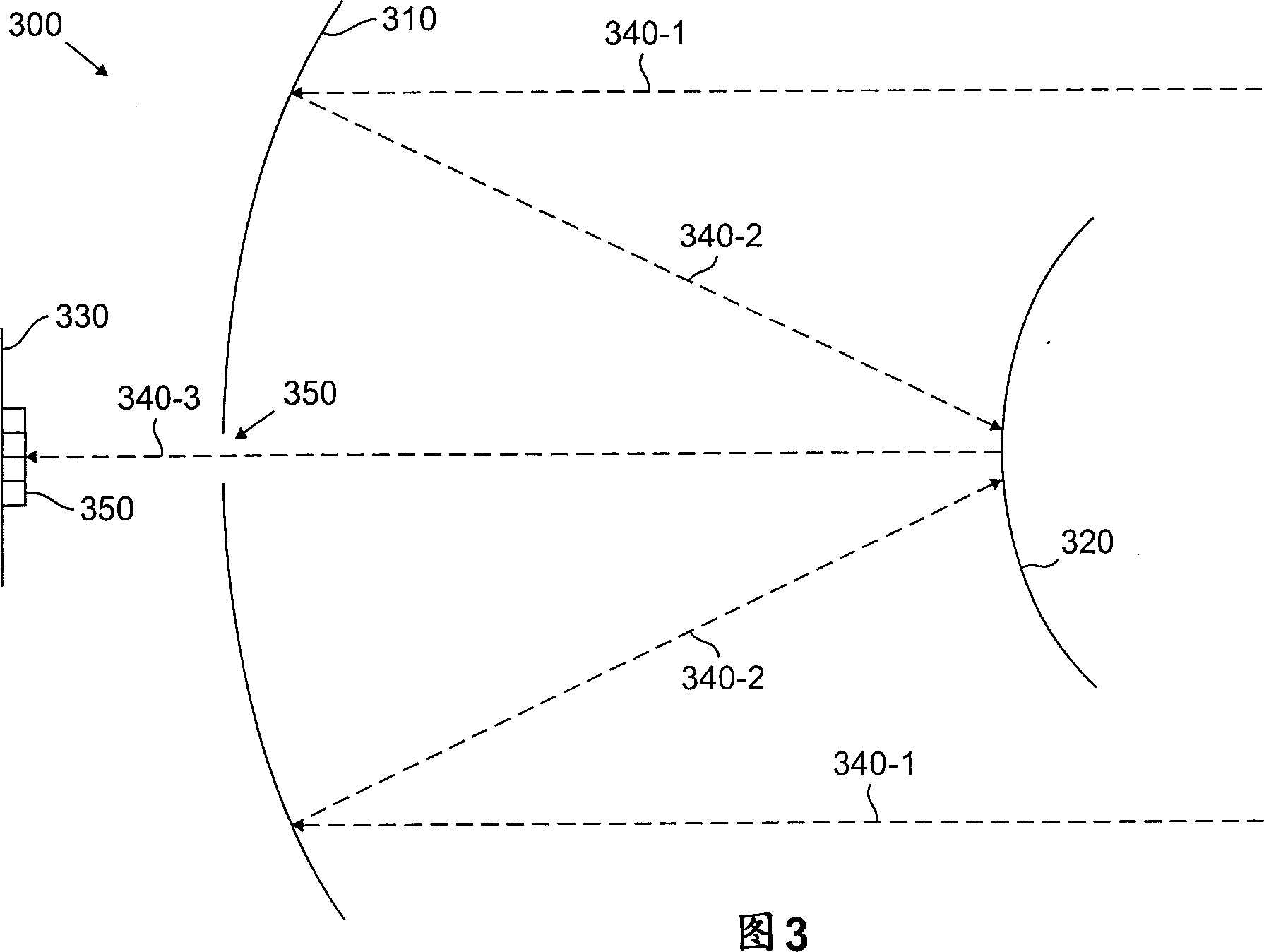One-point-to-multipoint free space radio optical communication system
A wireless communication system and optical signal technology, applied in the field of improved optical telescopes, can solve the problems of unspecified optical parts, etc., and achieve the effect of reducing production costs
- Summary
- Abstract
- Description
- Claims
- Application Information
AI Technical Summary
Problems solved by technology
Method used
Image
Examples
Embodiment Construction
[0015] The present invention provides an improved optical telescope for a wireless optical communication system, which can meet the above-mentioned goals of improving bandwidth, link distance, and reliability relative to conventional designs. According to a feature of the present invention, a Richey-Chetrien (RC) telescope is used in the wireless optical communication system, which is further discussed with reference to FIG. 2 . Previously, RC telescopes were only used on large astronomical telescopes, including the Hubble Space Telescope (Hubble Space Telescope). For a detailed discussion of the general applications and parameters of RC telescopes, see, eg, Daniel J. Shroeder, Astronomical Optics, 94-109 (Academic Press, 1987), incorporated herein by reference. In general, RC telescopes are characterized by a concave primary mirror and a convex secondary mirror, each having a hyperbolic shape.
[0016] Fig. 2 shows an RC optical telescope 200 according to the present inventi...
PUM
 Login to View More
Login to View More Abstract
Description
Claims
Application Information
 Login to View More
Login to View More - R&D
- Intellectual Property
- Life Sciences
- Materials
- Tech Scout
- Unparalleled Data Quality
- Higher Quality Content
- 60% Fewer Hallucinations
Browse by: Latest US Patents, China's latest patents, Technical Efficacy Thesaurus, Application Domain, Technology Topic, Popular Technical Reports.
© 2025 PatSnap. All rights reserved.Legal|Privacy policy|Modern Slavery Act Transparency Statement|Sitemap|About US| Contact US: help@patsnap.com



